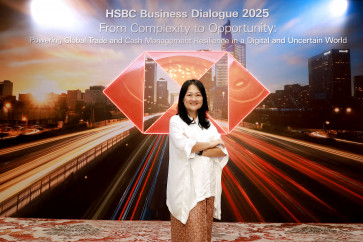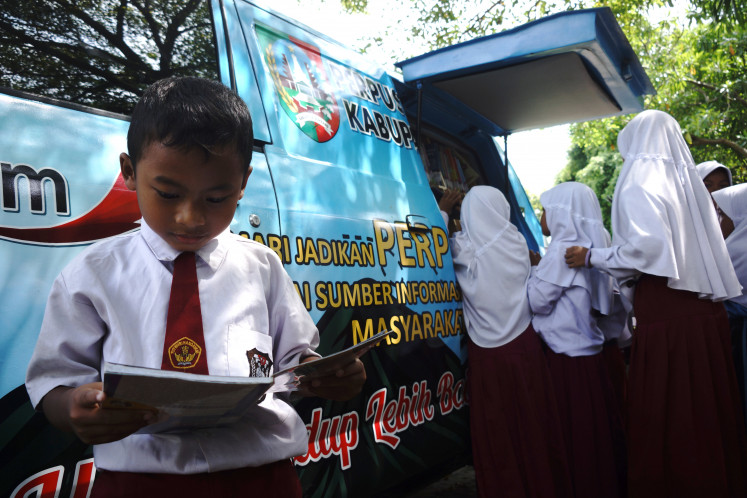Popular Reads
Top Results
Can't find what you're looking for?
View all search resultsPopular Reads
Top Results
Can't find what you're looking for?
View all search resultsManagement lessons from Huawei
DedicationA look behind the scenes of the Chinese telecom firm’s impressive global growthIf you aren’t familiar with Huawei, you have probably not been keeping up-to-date with the latest global news developments
Change text size
Gift Premium Articles
to Anyone
Dedication
A look behind the scenes of the Chinese telecom firm’s impressive global growth
If you aren’t familiar with Huawei, you have probably not been keeping up-to-date with the latest global news developments.
Huawei is a Chinese telecommunications company that has grown from its humble beginnings in 1987 to become a global leader in the sector.
In June 2019, Huawei reported first quarter revenue growth of 39 percent year-on-year (yoy) to US$26.8 billion. In the same period, Huawei’s smartphone shipments soared 50 percent yoy, while at the same time Apple’s shipments dropped 30 percent and Samsung‘s by 8 percent.
With the new figures, Huawei captured a 19 percent share of the global smartphone market in the first quarter of 2019. Huawei commanded a 31 percent share in global mobile infrastructure equipment in 2018.
The company also develops artificial intelligence as well as 5G cellular network technology.
The United States is persuading countries to ban the Chinese group’s telecommunications equipment from their 5G networks after it accused the Chinese company of espionage.
The US also requested that Canadian authorities detain Huawei chief financial officer Meng Wanzhou — the eldest daughter of its founder and chief executive officer Ren Zhengfei — in late 2018 under allegations that she violated sanctions against Iran.
Built on Value the Huawei Philosophy of Finance ManagementAgainst all odds, Huawei’s growth and survival in the telecom business is a fascinating subject. Zhengfei established the company as a small firm in 1987, supplying telephone equipment to the rural Chinese market.
Recently, Renmin University of China Business School Weiwei Huang — also Huawei’s chief management scientist — launched three books on Huawei’s management style through academic publisher Palgrave Macmillan. The books outline how the company synthesizes Western management science and Zhengfei’s own leadership philosophy.
The first one is titled Customer Centricity: The Huawei Philosophy of Business Management and Dedication: The Huawei Philosophy of Human Resource Management. On June 19, they launched the third book which made Huang’s management trilogy, called Built on Value: The Huawei Philosophy of Finance Management with a gala dinner attended by Huawei’s business partners, in Jimbaran, Bali.
Huang and his colleague, American industry analyst and digital technology economist George Gilder, attributed Huawei’s global success to its strict adoption of Western management principles, especially those proposed by the late American management guru Peter F. Drucker.
They said a major turning point that marked Huawei’s rise to global success came in 1999, when the company underwent a major business transformation under the help of American business management consultancy company Accenture and its information technology company International Business Machines Corporation (IBM) to help Huawei adopt their best practices.
“Prior to that, we just did the projects very randomly,” Huang said. “In 1999, however, we wanted to have more awareness on how we do things in the company, which drove our business transformation”.
Here are some of Huawei’s management secrets as Huang reveals:
Customer Centricity
Understand what motivates human beings
Huawei conducts regular surveys to understand what motivates its employees.
Pay came last on their list of primary motivators. At the top of the list was personal growth and development, followed by value and meaning from work as well as recognition for their work.
Therefore, the company has learning and development programs to help employees continuously boost their skills and stay abreast with ever-changing business landscapes.
The company applies the same principle of human motivation to retain its young employees from the millennial and Z generations (born between the early 1980s and late 1990s), who have a bad reputation for their low commitment to organizations and career streams.
Quite the contrary to stereotypes accusing these youngsters of being complacent, internal surveys actually show they are eager to tackle challenges.
Huawei leadership tasks them to develop new, cutting-edge technologies, giving the young employees a high sense of accomplishment.
Develop egalitarian leadership style
In Asian cultures, hierarchies between seniors and juniors as well as leaders and subordinates might make it difficult for juniors and subordinates to communicate openly with their more senior colleagues. Huawei, however, has tried to close this gap by encouraging its leaders to be open to criticism and develop a safe space where they can engage in constant dialogue with their team members.
Past success does not guarantee future success; therefore, leaders have to be able to accept criticism while carrying out introspection. Therefore, Huawei applauds those who succeed but also support those who fail. It tolerates mistakes and allows young staff to realize their dreams. If they fail, they only have to explain why and come up with strategies to amend their failures.
Weiwei HuangEstablish efficient, integrated operational systems
In recent years, Huawei has focused on digitization of the workplace that integrates functions across various departments, to make bureaucracy and management more efficient.
Previously, company data was stored in silos not accessible by other departments. It was previously also very time consuming to check financial and human resource data, not to mention that the process involved a lot of people.
Huawei’s integrated Datalake system pools data across all company functions before connecting them to related functions across departments and coming up with solutions and functions on a real time basis where users — employees and customers alike — could apply the company data based on their needs.
Needless to say, this has boosted efficiency and increased productivity within the company, giving employees more time for creative endeavors as opposed to tiring themselves out with clerical tasks.
Invest in research and development
While learning machines have taken over clerical tasks at Huawei, the company has room to invest in innovative and creative endeavors, channeled mostly in its huge research and development (R&D) department.
Huang’s book on Huawei’s finance management details how the company carefully manages its huge spending on R&D, which is key to the company’s strong innovation and adaptability. In 2018, the company allocated 14.1 percent of its total revenue — which amounted to $15.1 billion — to invest in R&D activities, carried out by 80,000 engineers, who made up 45 percent of Huawei’s total workforce.
Gilder says the information economy — with its heavy reliance on R&D activities — will be a new frontier for global business as our natural resources are depleted. The R&D activities are aligned with Huawei’s constant learning and training programs for its employees.
“Natural resources are no longer our primary source of wealth now; instead, we now have to rely on spiritual resources encapsulated in human knowledge. Economic growth should be spurred in its entirety by human learning activities,” he asserts.
George Gilder— Photos courtesy of Huawei














